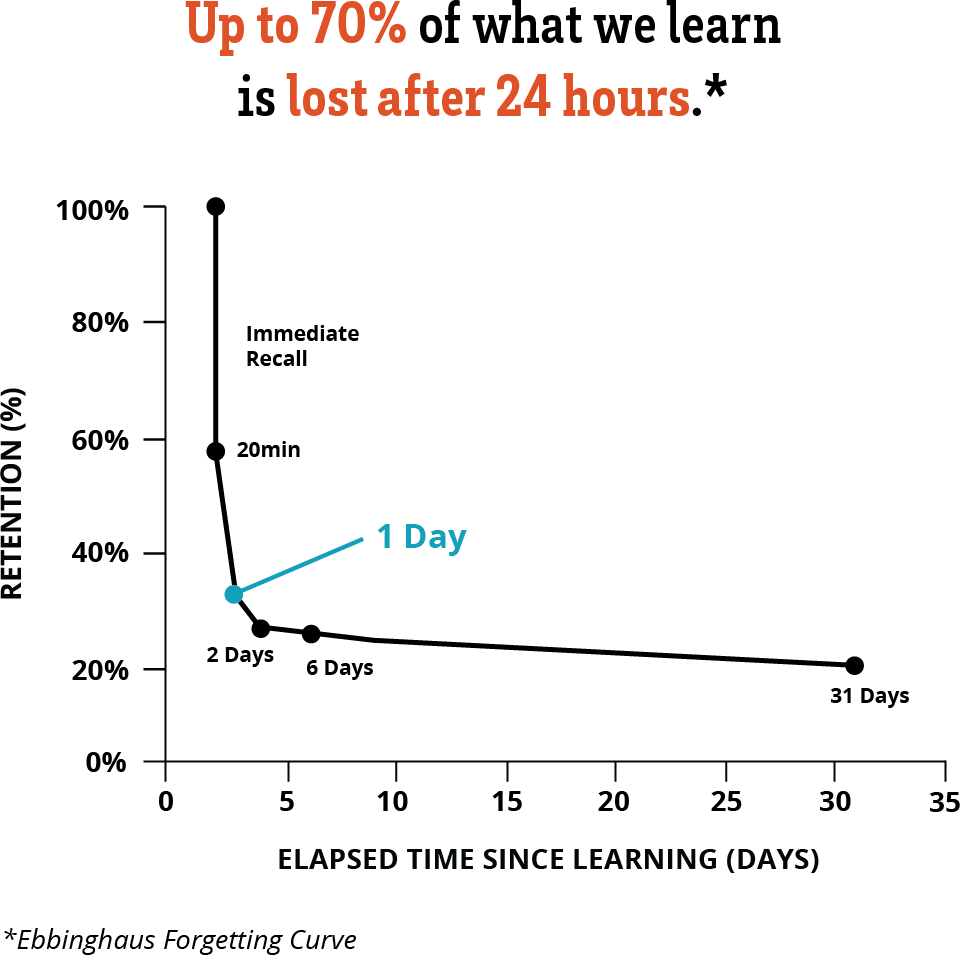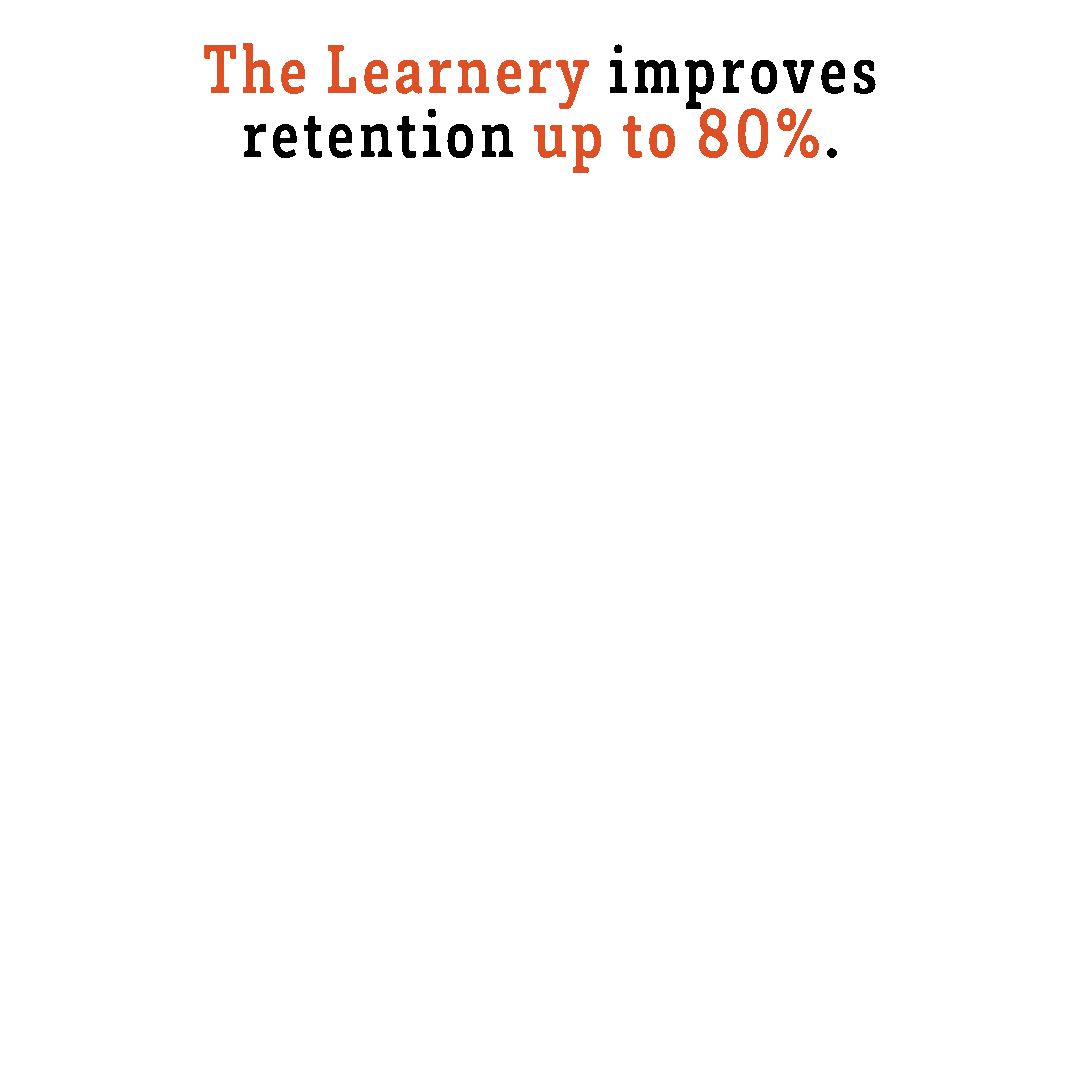Home »
The Science Behind Microlearning
Traditional training methods deliver lots of information all at once, like a firehose, with little to no repetition. According to the Ebbinghaus Forgetting Curve, as much as 70% of what we learn is lost in just 24 hours.

By contrast, microlearning breaks information into small, bite-sized chunks and repeats them, over time. Because content is delivered gradually, and with repeated exposure, learning and retention are optimized.

Why Does Microlearning Work?
Spacing Effect
Microlearning is based on the spacing effect principle which states that information is better retained when learning is spaced out over time rather than cramming it all at once.
Chunking
Microlearning also leverages the psychological concept of chunking. When information is organized into smaller, manageable units, learners can focus on one concept at a time for deeper encoding into long-term memory.
What are the benefits of microlearning?
Microlearning facilitates learning and enables long-term mastery of subject matter.
Improved
Retention
bite-size concepts
are easy to absorb
and retain
Faster
Learning
microlessons are
faster than
traditional learning
Improved
Engagement
interactive learning
with questions, videos
and animations
Flexible
Learning
bite-sized lessons fit
into even the busiest
of schedules

